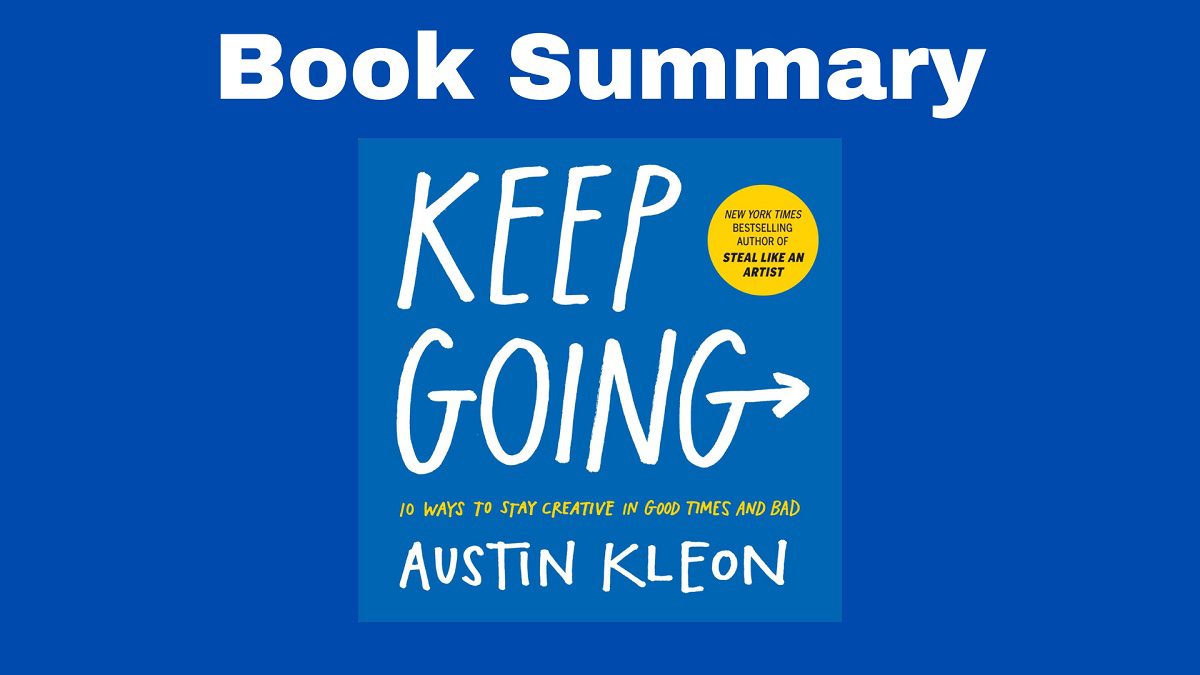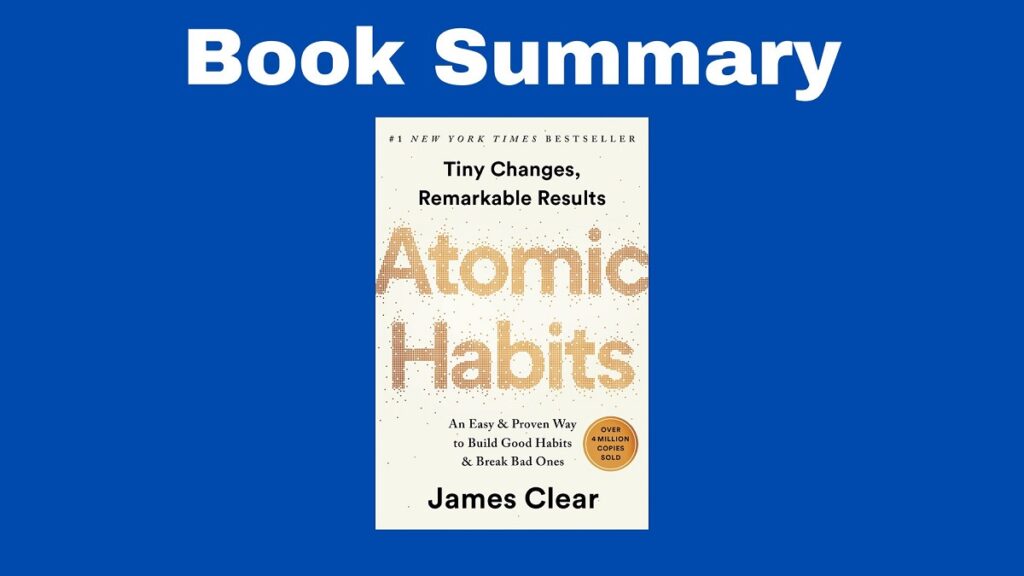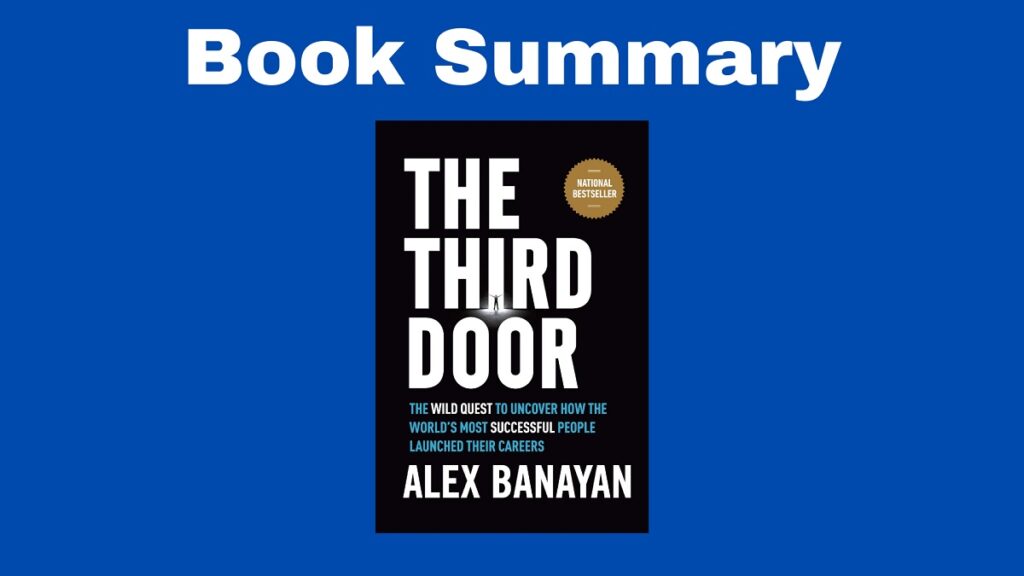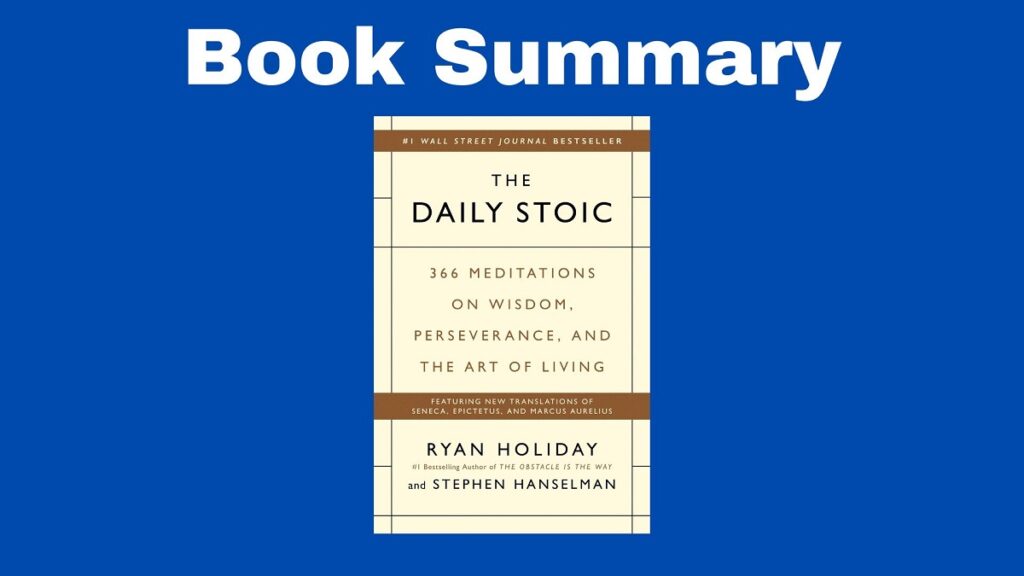The Book in Three Sentences
Austin Kleon’s previous books, Steal Like an Artist and Show Your Work, taught you how to be more creative by embracing other people’s influences and how to become known. By following ten rules, Keep Going teaches you how to stay creative and focused for the rest of your life. Keep Going is extremely short which makes it easy to read for the first time and easy to re-read for the umpteenth time too.
Keep Going Summary
I Write This Book Because I Needed to Read It
Being an artist doesn’t become easier over time. This book is about ten things that helped Kleon to keep going.
Chapter 1: Everyday Is Groundhog Day
There’s no such thing as a heroic journey. Being an artist feels like doing the same thing over and over again. The creative life isn’t linear, it’s a loop because you come back to the same point after each project. Regardless of what you do, you never arrive at a destination.
Rely on a daily routine because it gives you guidance when you’re lost. There’s no perfect routine, you have to establish your own. A routine doesn’t restrict your freedom, it gives you freedom.
Make lists, they bring order to the chaos. No day will be exactly as you planned, but making it to the end of the day means that you can focus on tomorrow.
Chapter 2: Build a Bliss Station
Creativity is about connection (connection to others) and disconnection (disconnection from the world). Silence and solitude are important in our hyper-connected world. Build a “bliss station”, this is a room where you disconnect from the world and you’re creative. It’s a where and a when. Build a routine around it.
Don’t wake up to the news, they can wait. The early morning is a moment for work and creativity, don’t give it up to watch a chaotic world. Instead of looking at your phone first thing in the morning, go to your bliss station, eat breakfast, do exercise, walk, run, listen to music, play with your kids, or meditate.
Airplanes are great places to get work done. Replicate that experience by using airplane mode. Use this moment to reconnect with yourself or your work.
Learn to say no. Decline invitations. The cure to FOMO (the fear of missing out) is JOMO (the joy of missing out).
Chapter 3: Forget the Noun, Do the Verb
You can’t have the job title (the noun) without the work (the verb). Be careful with job titles, they can restrict your work. If you call yourself a painter, maybe you’ll avoid writing. Don’t wait for someone to give you a title and do the work. Do the work anyway. When you get the noun, keep doing the verb. Job titles aren’t for you, they’re for others.
Look for new and unfamiliar tools. Make bad art intentionally. It can be fun. Hang out with your kids more, and Play with them. Have toys of your own.
Chapter 4: Make Gifts
Your hobby doesn’t have to be your side hustle. Money doesn’t have to be involved. As soon as you turn something you love into a job, you might hate it. If you decide to do it anyway, keep a part to yourself. Money can ruin your creative endeavors, and so is using internet metrics (views, followers, likes, subscribers, shares, reblogs, visits, and so on). These metrics can be used to decide what to work on next. Don’t. What you enjoy making isn’t usually an online hit. Ignore the numbers, at least every once in a while. When you ignore quantity, you can focus on quality.
You have your own definition of success.
When you feel lost, make gifts. Do something special for a special someone.
Chapter 5: The Ordinary + Extra Attention: The Extraordinary
Your creative life doesn’t depend on where you live, your equipment, or your day job. Anyone can do extraordinary work. Slow down, meditate, and draw. Drawing is great because it helps you observe and focus. Your attention is important. Everyone and everything wants to steal it from you.
Chapter 6: Slay the Art Monsters
Terrible people are more than capable to create beautiful art, but you don’t have to be terrible to do it. If your art adds misery to the world, stop doing it.
Chapter 7: You Are Allowed to Change Your Mind
We’re afraid to change our minds because we fear that others might judge us or see us as weak. Being uncertain is part of being an artist. Doing it on the internet is risky, but you can always do it somewhere else (such as in your journal, studio, or bliss station).
Interact with people that don’t share your point of view. This is how we think, learn, and trade ideas. This gives you the opportunity to change. Read old books.
Chapter 8: When in Doubt, Tidy Up
Your studio should be a mess. Not an accidental mess, but an intentional one. Creativity and productivity are not the same. You can be your most creative when you’re being the least productive. Plan and prepare your tools before working. Tidying is too stressful when you’re worried about the results.
Sleep to tidy up your brain. Take naps. Creative work shouldn’t vandalize, it should repair.
Chapter 9: Demons Hate Fresh Air
Walk. A lot can be solved by walking. Walking is good for your body, spirit, and mind. You can release inner and outer demos (corporations, politicians, marketers) by going out and walking, we see the world for what it really is.
Chapter 10: Plant Your Garden
Nature is cyclical, learn from it. From an early age, we’re taught everything is supposed to improve all the time. That’s not how the universe works. Like nature, humans have their own cycles and seasons. Keep working and keep going.




